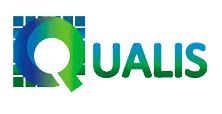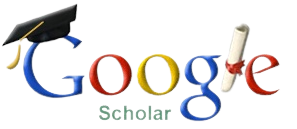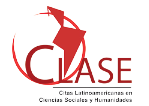Bibframe: linked data model for libraries
DOI:
https://doi.org/10.5433/1981-8920.2016v21n2p292Keywords:
Knowledge Organization Systems, Information and Communication Technologies, Data Modeling, Ontologies, Semantic WebAbstract
Introduction: The technological development of the last decade has provided new tools for modeling, representation and organization of information resources in the most different fields of knowledge. In the field of Information Science highlights the Bibliographic Framework (BIBFRAME) as a new model of representation that enables the formal description of the relationships between resources. This data model is related to research trends involving Linked Data; Data Science; Enhanced Publication and Semantic Web. Objective: Provide theoretical subsidies that contribute for a better understanding of BIBFRAME data model, describing its entirety, and to present a discussion on the main challenges and prospects for use of this new data model in libraries. Methodology: The methodology is characterized as exploratory and descriptive research, with a theoretical approach. Results: They were presented the main technologies, conceptual elements and features of BIBFRAME model and reported the challenges and prospects of using this new data model in libraries. Conclusion: The BIBFRAME model contributes to a paradigm shift in relation to how do we envision the processes of control, exchange and sharing in informational resources, providing a boost to the repositioning of libraries in the contemporary scenery in order to strengthen activities related to identification and formalization of relationships between resources available in web.Downloads
References
BURGER, Robert. Authority work: the creation, use, maintenance, and evaluation of authority records and files. Littleton: Libraries Unlimited, 1985.
ECO, H. Muito além da Internet. 2003. Disponível em http://www.ofaj.com.br/textos_conteudo.php?cod=16>. Acesso em: 16 dez. 2015.
GORMAN, M. Authority Control in the Context of Bibliographic Control in the Electronic Environment. In: International Conference Authority Control: Definition and International Experiences, Florença, 2003. Disponível em: http://eprints.rclis.org/4164>. Acesso em: 06 out. 2015.
HALLO, M.; LUJA´N-MORA, S.; MATÉ, A.; TRUJILLO, J. Current state of Linked Data in digital libraries. Journal of Information Science, 2016, Vol. 42 n.2 p.117–127.
INTERNATIONAL FEDERATION OF LIBRARY ASSOCIATIONS AND INSTITUTIONS. Guidelines for Online Public Access Catalogue (OPAC) displays: final report: may 2005. München: K. G. Saur, 2005.
INTERNATIONAL FEDERATION OF LIBRARY ASSOCIATIONS - IFLA. Statement of international cataloguing principles. 2009. Disponível em: http://www.ifla.org/files/cataloguing/icp/icp_2009-en.pdf>. Acesso em: 16 jun. 2014.
LIBRARY OF CONGRESS. Bibliographic Framework as a Web of Data: Linked data model and supporting services. Washington, 2012. Disponível em: http://www.loc.gov/bibframe/pdf/marcld-report-11-21-2012.pdf >. Acesso em: 9 mai. 2016.
MITCHELL, E. T. Building Blocks of Linked Open Data in Libraries. Library Technology Reports: Library Linked Data: Research and adoption 49, no. 5. July. 2013.
MODESTO, J.F. O acervo da biblioteca está redondo, deixe-o em forma com o marc. OFAJ, Londrina, Abril. 2007. Disponível em: http://www.ofaj.com.br/colunas_conteudo.php?cod=294> Acesso em: 9 mai. 2015.
RAMALHO, R.A.S. Análise do Modelo de Dados SKOS: Sistema de Organização do Conhecimento Simples para a Web. Informação & Tecnologia (Itec), v. 2, p. 66-79, 2015. Disponível em: http://periodicos.ufpb.br/ojs/index.php/itec/article/view/25995> Acesso em: 9 mai. 2016.
Downloads
Published
How to Cite
Issue
Section
License
A revista se reserva o direito de efetuar, nos originais, alterações de ordem normativa, ortográfica e gramatical, com vistas a manter o padrão culto da língua e a credibilidade do veículo. Respeitará, no entanto, o estilo de escrever dos autores. Alterações, correções ou sugestões de ordem conceitual serão encaminhadas aos autores, quando necessário.
O conteúdo dos textos e a citação e uso de imagens submetidas são de inteira responsabilidade dos autores.
Em todas as citações posteriores, deverá ser consignada a fonte original de publicação, no caso a Informação & Informação.














